
Touring various electric bike factories has been a fascinating experience for me over the years. It’s a chance to look behind the curtain and see how the sausage is made, so to speak. And with bicycles being one of the great equalizers, it is interesting to see each culture’s take on the handy vehicles. I’ve been on behind-the-scenes tours of e-bike motor builders, Chinese e-bike factories, American e-bike factories, and all sorts of other e-rideables in various countries. But checking out Europe’s own homegrown e-bikes at Ampler’s Tallinn, Estonia-based factory has been a particular high point of mine.
Come along with me while we explore just how this classy e-bike startup builds its own local e-bikes, which are quickly becoming a favorite across major European markets.
Ampler’s electric bikes are known for their elegant designs that closely mimic conventional pedal bikes. In fact, many of the company’s models are barely distinguishable from pedal bikes.
We’ve tested the bikes before and been majorly impressed with the smooth ride and quality manufacturing.
We’ve since watched as Ampler has grown into a burgeoning European powerhouse and has released several new models to high acclaim.
To achieve that kind of independent design and high growth rate, the company has had to handle nearly everything itself, from production to fulfillment.
Check out my video tour below to see the factory in action, then read on for the full story!
Production starts with the bare frames that are taped and prepped before they wind their way through the company’s extensive powder coating facility.
The first-generation models were painted, but Ampler found that the results were mixed. As many car companies have discovered, paint is difficult. But with powder coating, Ampler has found that it can maintain a great shine while offering a much more rugged and scratch-resistant finish.
The powder coating is actually done in two steps, which requires two loops around the frame roller coaster. It could be done in one, but Ampler only has a single powder coating robot, and thus switches between color and clear coat for each pass.
An average of 120 frames move through the painting facility each day, though some days see as many as 150 frames completed.

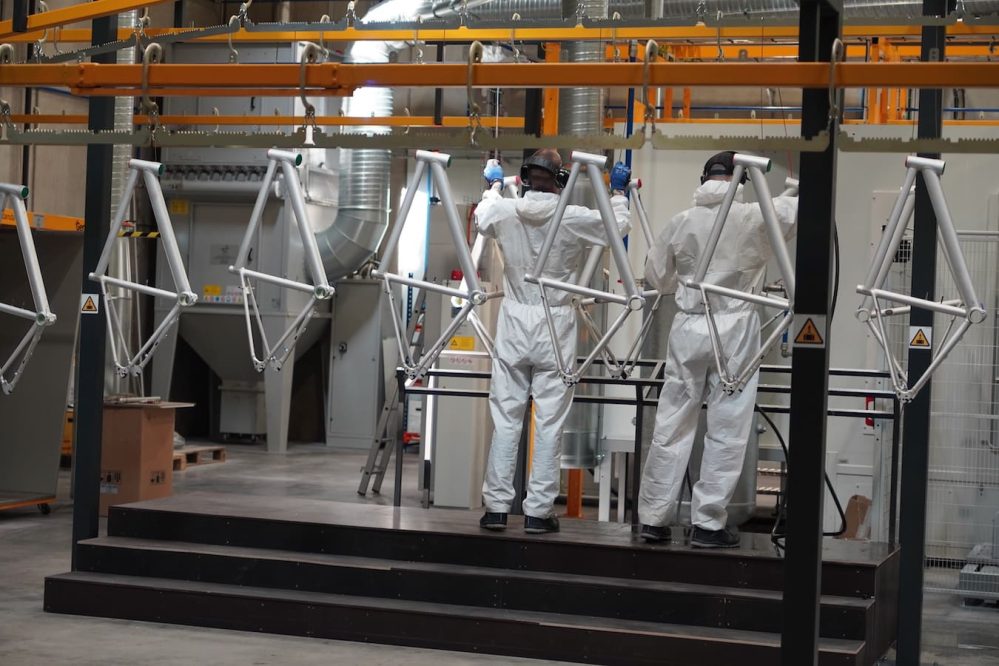
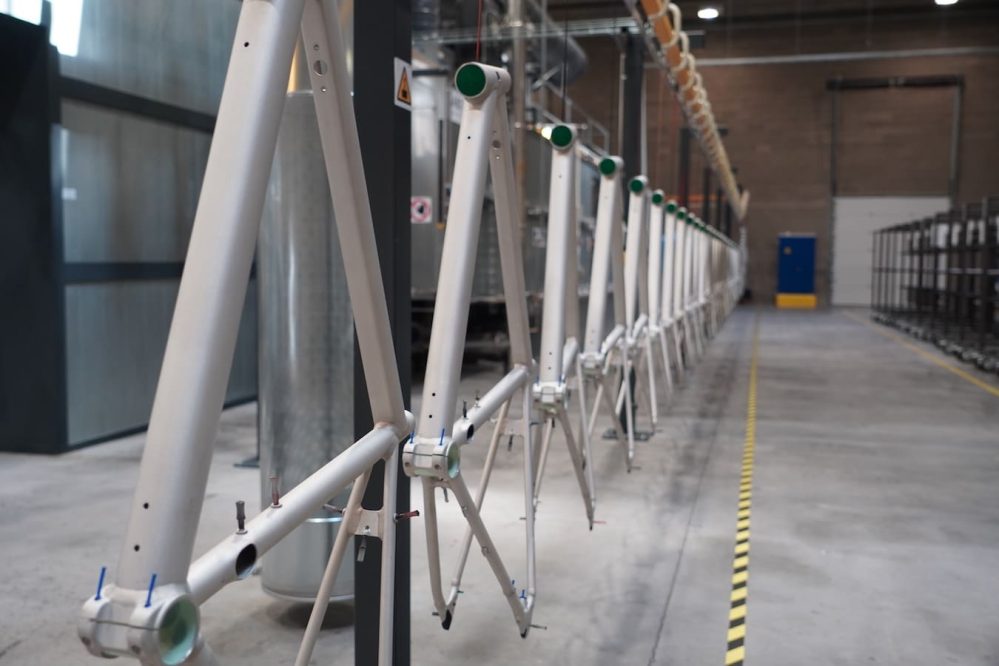
Next, the frames move on to electronics stuffing. That means the company’s proprietary batteries get fed into the frame along with controllers, torque sensors, wiring harnesses, and everything else that sends power and signals throughout the bikes.
I wasn’t able to photograph much of the electronics due to the secretive nature of their custom electronics designs, but trust me when I say they’re pretty awesome looking. The batteries in particular are slickly engineered to hide in the downtube of the frame. They’re accessible for servicing but not removable for daily charging, which is just about their only downside.
A new display is built into the company’s second-generation models, which also gets inserted into the frame.
The display lines up flush with the tube and integrates nicely, helping remove extra bulk from the handlebars. The result is a clean and sleek set of bars that adds to the bike’s pedal-only illusion.
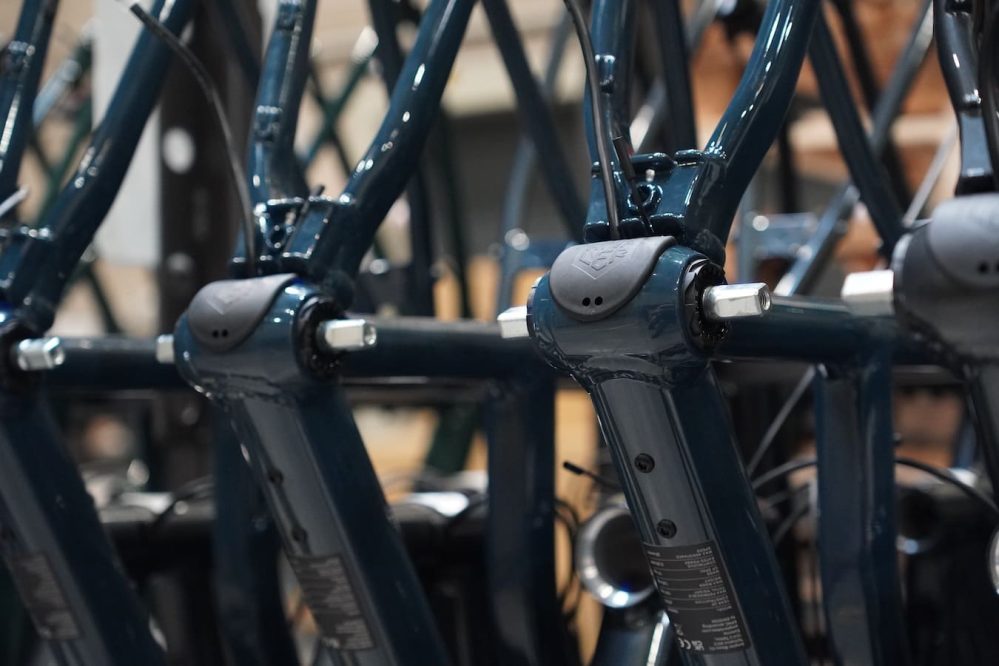
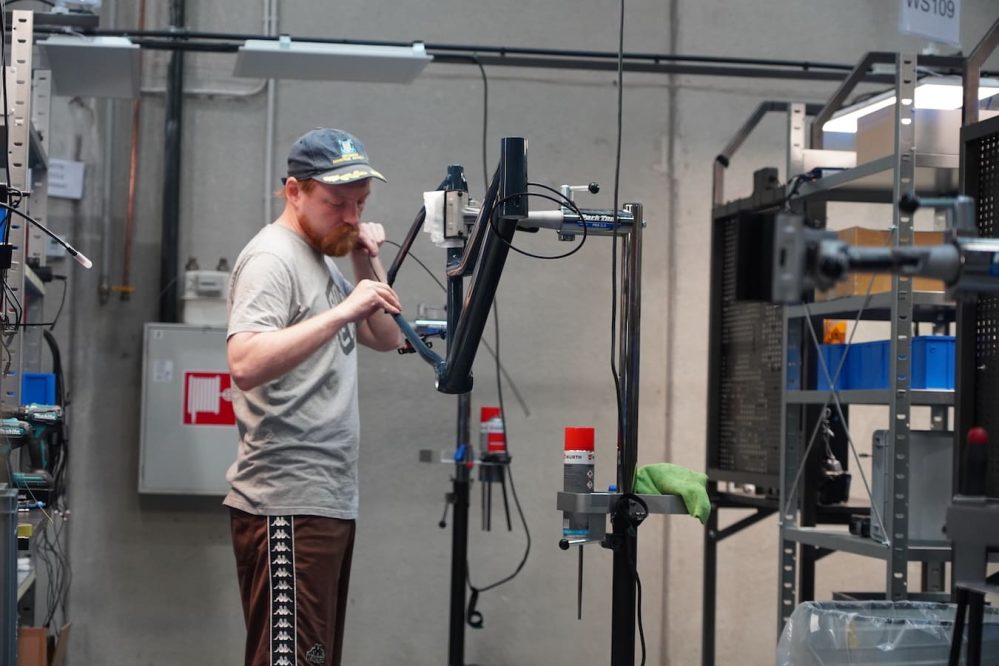
Further along in the factory, wheels are built up from bare rims using a combination of hand setting and robotic truing.
It’s interesting to see this same step completed at different e-bike factories around the world. Each time I see it, the faces of the workers are different but the machines are basically all the same. I feel like there’s a philosophical message in there somewhere, but I’m not sure I’m qualified to look that deeply.
The motors that get laced into the wheels may look like your basic Chinese-made electric motors, and technically they are. Well, Chinese-made, at least. But they’re far from standard. Ampler has changed just about every part in them to make them more robust and longer lasting than what typically comes out of an OEM factory. While Ampler would love to be able to build its own motors in-house, some parts like these can’t really be brought into local production until you hit an even larger production scale. Until then, Ampler designs its own changes to the motors and has them built off-site.
Once the wheels are built, they are assembled onto the bikes at individual mechanic stations along with the rest of the bike components. Brakes, cranks, pedals, handlebars, and other components are all installed at this step, with around 80 bikes finishing assembly each workday.
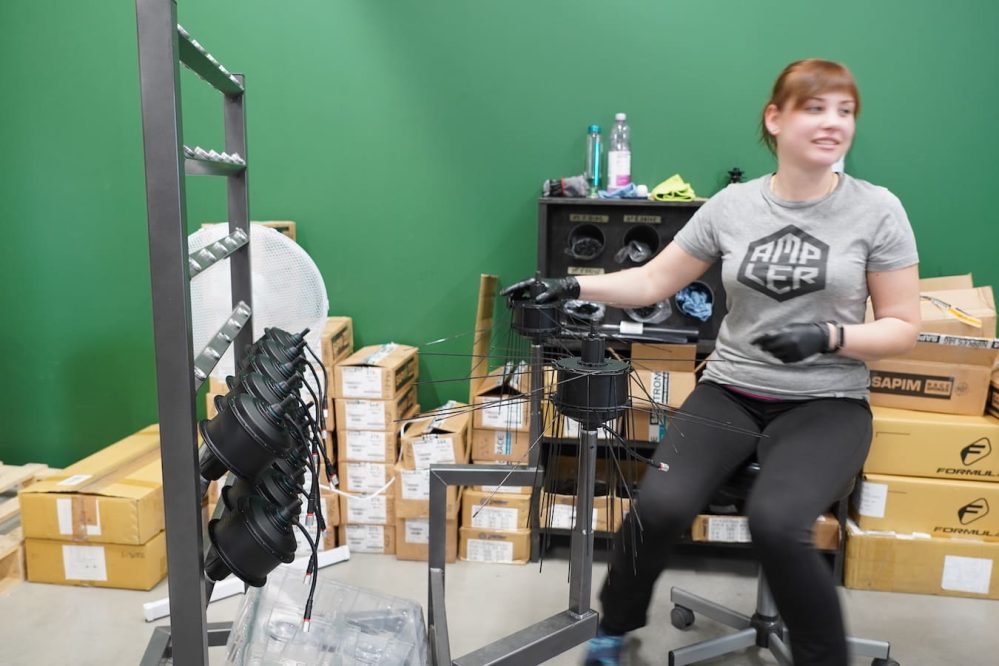
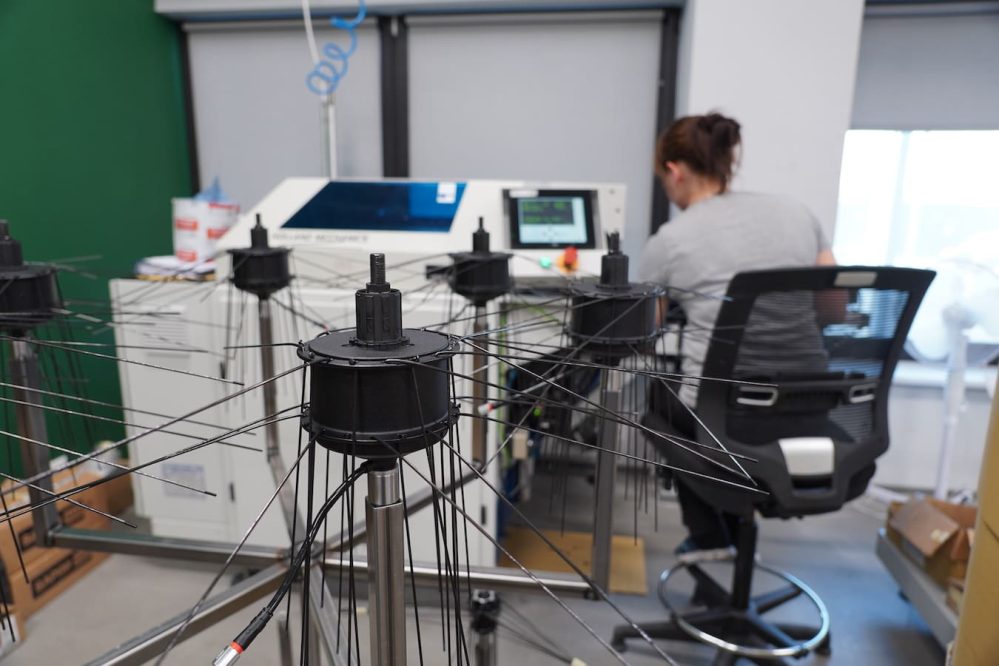
The bikes then move on to testing where they are ridden by a professional tester to ensure that everything is working properly and the systems are all dialed in perfectly. If anything isn’t 100% perfect, it is noted on the bike and it goes back to a mechanic. Usually everything checks out the first time though and the bike is off to packaging.
Ampler designed its packaging to ship the bike as completely assembled as possible to make it easy for the customer who receives the bike. While there are several Ampler showrooms and dealers across Europe, most customers order their e-bikes online and thus receive the bike shipped directly to their doorstep. The packing is also designed to be as environmentally conscious as possible, eschewing foam for cardboard that is custom cut to cradle Ampler’s specific e-bikes.
Having as much of the process being handled in-house has proven critical for Ampler’s growth, especially as the company hopes to continue its skyward trajectory.
Currently sales hover at around 12,000 e-bikes per year, but the company has been doubling its sales every year and has big projections for future growth.


With five models of e-bikes to choose from across a range of commuter-style models, Ampler is trying to create a little bit of something for everyone in the urban e-bike market.
I had the chance to do a bit of touring around on an Ampler Juna that I rode to dinner down by the sea. The Juna is a light and comfort-oriented electric bike that offers a step-through frame but doesn’t go full-on women’s Dutch bike either. It finds a happy middle ground and makes for a sprightly yet easygoing ride.
It includes a Gates carbon belt drive setup for a silent, maintenance-free drivetrain and feels as smooth as the welds look, which is to say “very.”
The next day I had a chance to spend a whole morning and most of the afternoon touring Tallinn on an Ampler Axel e-bike. I captured a pile of great footage of that ride experience, and I’ll be excited to return soon with a complete first-ride review of the Axel.
Suffice it to say for now though that Ampler’s bikes are a beautiful combination of sleek design, lightweight engineering, and high-quality fabrication.
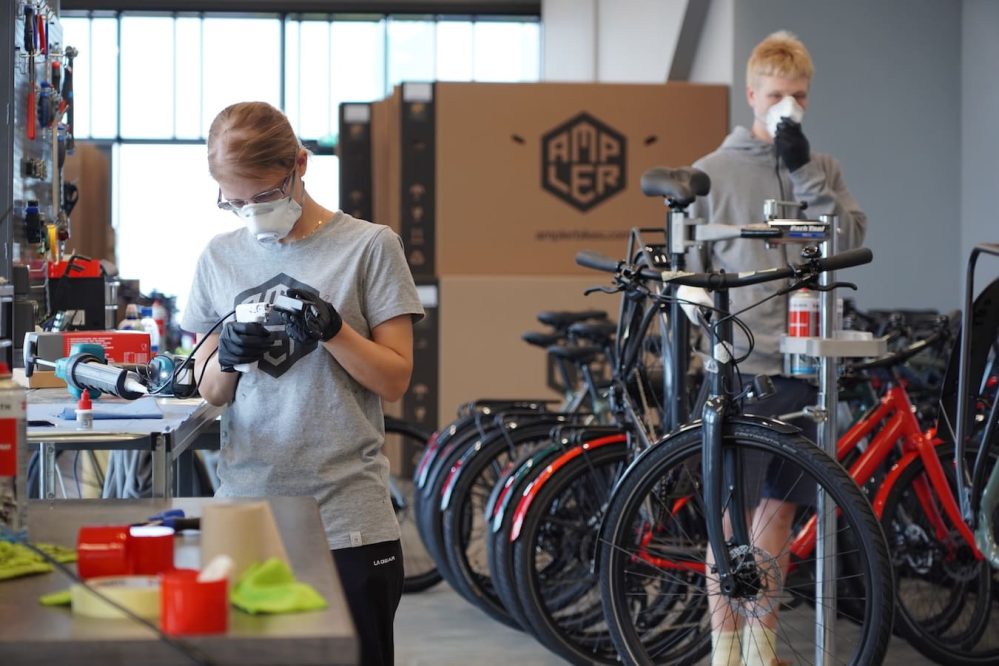
FTC: We use income earning auto affiliate links. More.





Comments